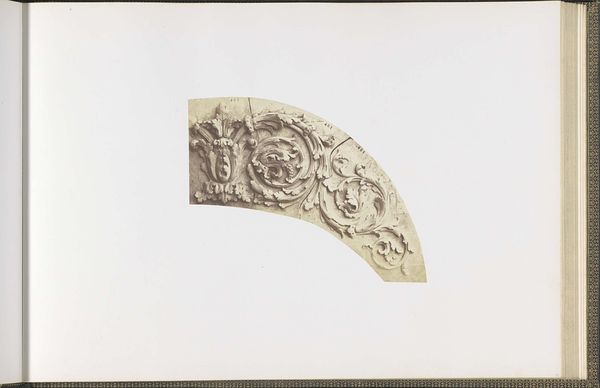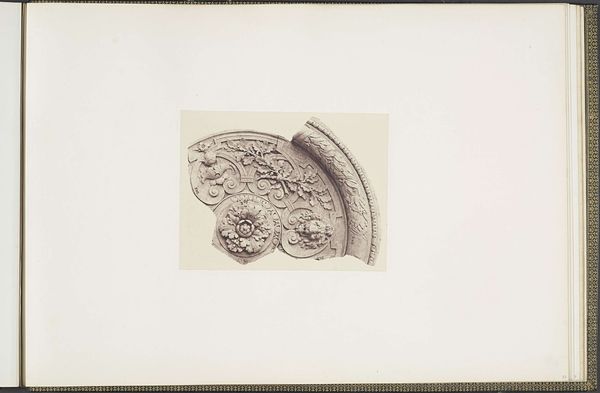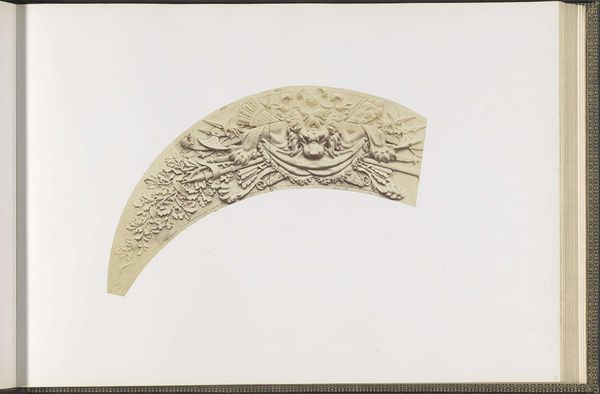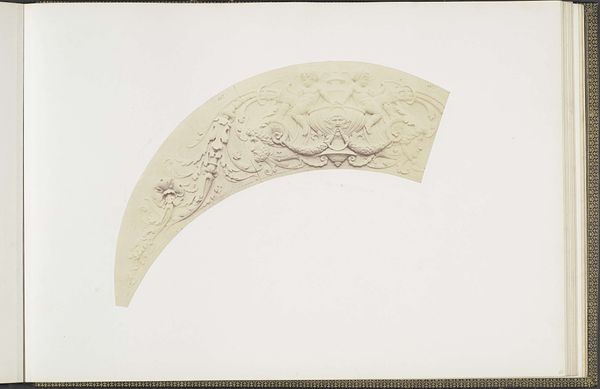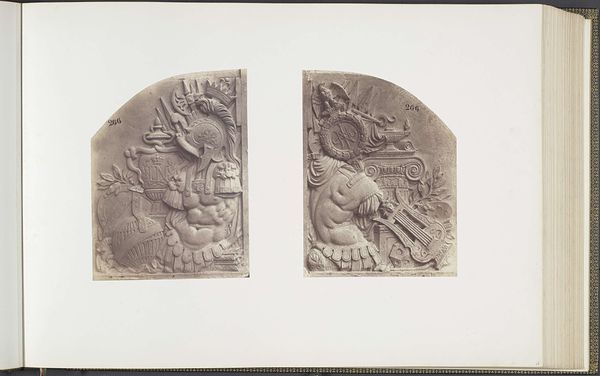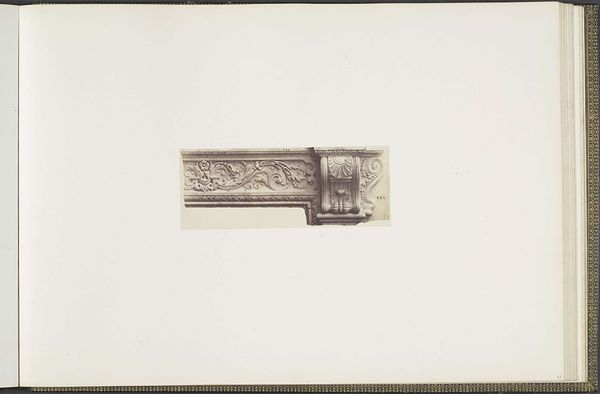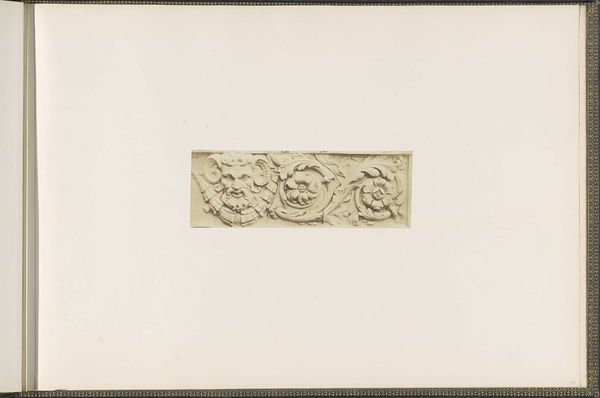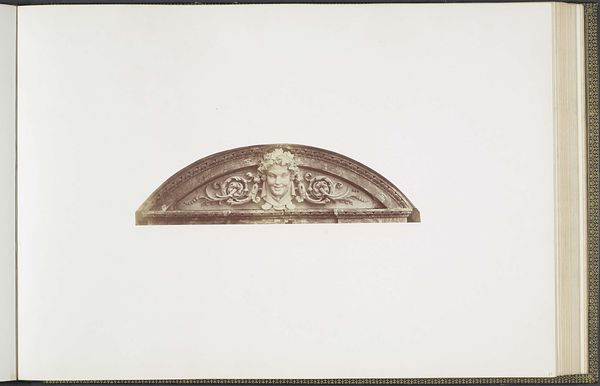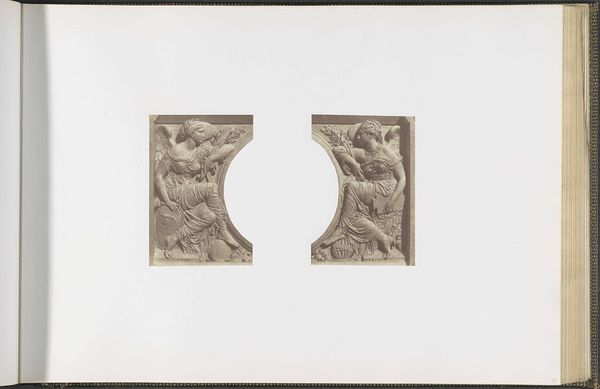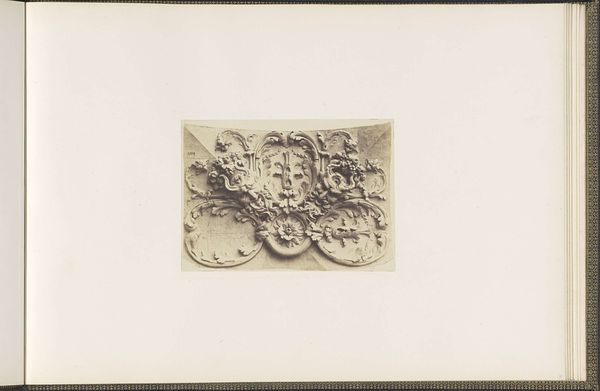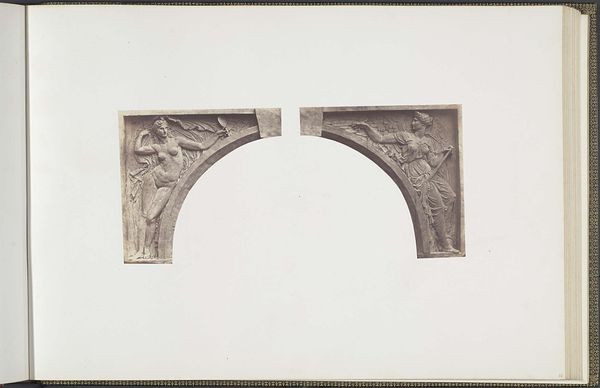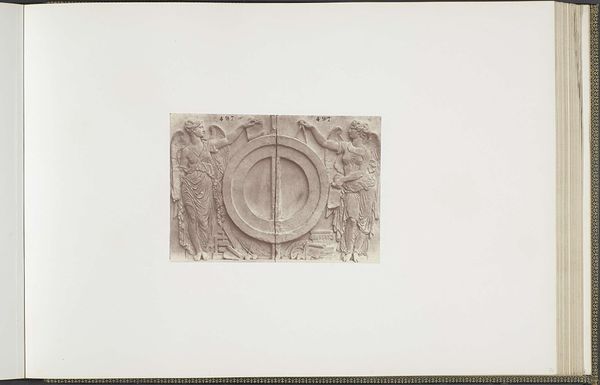
Gipsmodel voor een gewelfversiering van het Palais du Louvre door François Théophile Murgey c. 1855 - 1857
0:00
0:00
edouardbaldus
Rijksmuseum
photography, sculpture, albumen-print
#
neoclacissism
#
photography
#
sculpture
#
albumen-print
Dimensions: height 378 mm, width 556 mm
Copyright: Rijks Museum: Open Domain
Curator: Here we have an albumen print by Édouard Baldus, a photographic study from around 1855 to 1857, titled "Gipsmodel voor een gewelfversiering van het Palais du Louvre door François Théophile Murgey" — essentially, a photograph of a plaster model for a ceiling decoration in the Louvre. Editor: Immediately, the creamy tones and the shallow depth of field give it a beautifully ethereal quality. It's almost like gazing upon a ghostly echo of classical art. Curator: Indeed. Baldus masterfully uses light and shadow to accentuate the delicate relief of the plasterwork. Note the precise articulation of the putto and the intricate floral patterns – hallmark features of the Neoclassical style it exemplifies. The circular or fan shape creates dynamic movement of the angel towards the urn. Editor: The Neoclassical embrace of idealized beauty always raises questions for me. Considering the sociopolitical climate of mid-19th century France—marked by stark class divisions and emerging social unrest—how might this idealized representation of cherubic innocence and opulent ornamentation function ideologically? This feels very much like a tool for obscuring real living conditions, in order to enforce conservative structures and ideas about beauty. Curator: I see your point, but from a purely formal perspective, observe the balanced composition and the rhythmic repetition of forms. The elegant arabesques draw the eye across the surface, culminating in the central figure of the winged child presenting an urn. The entire ensemble suggests a harmonious and ordered vision of beauty and virtue. The interplay of curves and angles in this particular configuration lends it a sense of classical grace. Editor: That "sense of grace" for whom, though? I can’t help but think about the absence of working-class hands that constructed the opulent decorations of the Louvre—the labor rendered invisible by Baldus's selective vision. Neoclassicism as a political statement is more clearly seen here as propaganda—glorifying the opulence while suppressing the means by which it came to be. Curator: Perhaps. Still, we can admire the technical skill of both Murgey in sculpting the original plaster model and Baldus in capturing it so exquisitely. It really is a marvel in photographic artistry and architectural representation. Editor: I agree. Baldus certainly demonstrates mastery, although my thoughts turn to the broader political and cultural currents. Curator: A perfect intersection, then, where form and context can enrich each other.
Comments
No comments
Be the first to comment and join the conversation on the ultimate creative platform.
